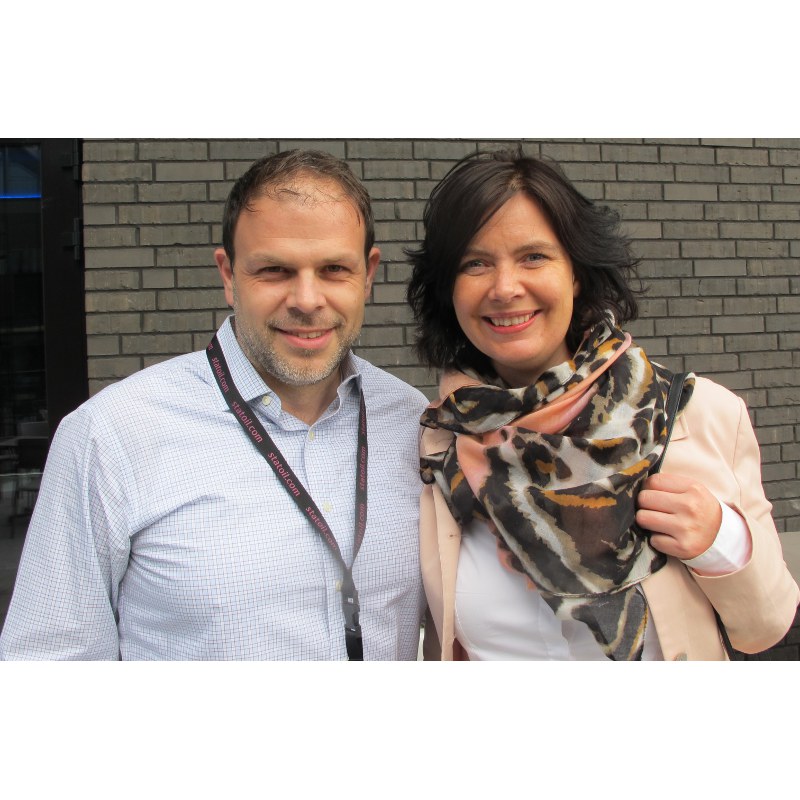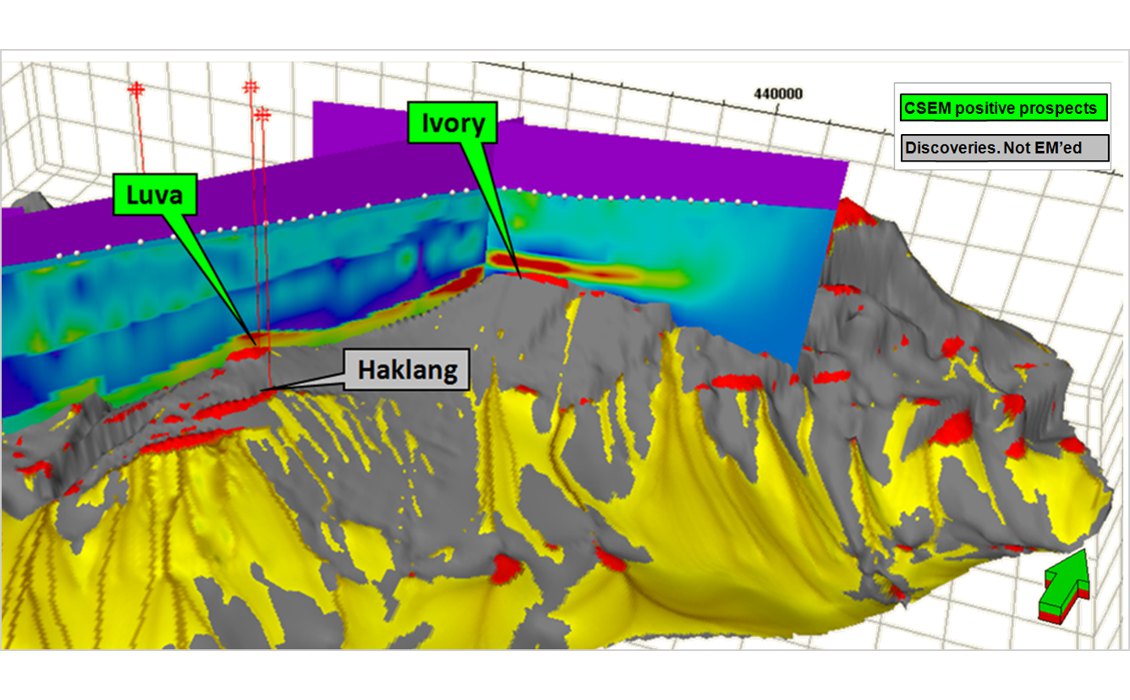The Faroese are known worldwide as great seafarers and fishermen and for centuries they have hunted the whales that inhabit the wild waters surrounding their islands. But in 1998 a group of them decided to look for a new quarry – elephants (of the hydrocarbon variety, obviously!).
Calling themselves Atlantic Petroleum, the eighteen Faroese investors obtained their first licence in their native waters in 2000, using the initial Faroese licensing round as a basis for entering into partnerships with strong international oil and gas companies. They soon began to move further afield, farming into acreage West of Shetlands, Ireland and the UK North Sea.
“We like to find good prospects in proven places,” explains Susanne Sperrevik, Exploration and Business Development Director for Atlantic Petroleum’s Norwegian arm. “We are a full cycle E&P company with a North West European focus, and we are looking for growth through licensing rounds, farm-ins and acquisitions.”
Jumping into Norway
 Overview map showing Atlantic Petroleum licences and activity. (Source: Atlantic Petroleum)By 2012, Atlantic had been party to a number of discoveries in the Central North Sea, had participated in drilling off Ireland and had been awarded significant acreage in the 3rd Faroese Licensing Round. In addition, after farming into a number of producing fields, production from the UK was bringing about 2,000 boepd net to the company. Then, in November 2012, Atlantic expanded its portfolio considerably through the acquisition of Emergy Exploration, newly prequalified to work in the Norwegian Continental Shelf.
Overview map showing Atlantic Petroleum licences and activity. (Source: Atlantic Petroleum)By 2012, Atlantic had been party to a number of discoveries in the Central North Sea, had participated in drilling off Ireland and had been awarded significant acreage in the 3rd Faroese Licensing Round. In addition, after farming into a number of producing fields, production from the UK was bringing about 2,000 boepd net to the company. Then, in November 2012, Atlantic expanded its portfolio considerably through the acquisition of Emergy Exploration, newly prequalified to work in the Norwegian Continental Shelf.
“In less than two years in Norway we quickly built a promising portfolio in the country, with two awards in the 22nd round; two in APA 2013, two extensions and six farm-ins,” says Susanne. “Through these we jumped enthusiastically into the deepwater Vøring Basin, a proven gas province, building a position around new planned infrastructure.”
The Vøring Basin is part of the Atlantic passive margin in the Norwegian Sea, several hundred kilometres north of Trondheim, with water depths which vary from 800 to 2,000m. Drilling in the basin did not start until 1997, but since then it has been the site of a number of discoveries, including the giant Ormen Lange gas field, which has recoverable reserves of about 14 Tcfg.
 Map of the Vøring Basin in the Norwegian Sea showing the main geological provinces and structural elements. (Source: Atlantic Petroleum)“The area has a number of proven gas plays, but we believe there could also be potential for oil,” Susanne explains. “Whilst the discoveries in the acreage near us are all gas, some do have oil shows.
Map of the Vøring Basin in the Norwegian Sea showing the main geological provinces and structural elements. (Source: Atlantic Petroleum)“The area has a number of proven gas plays, but we believe there could also be potential for oil,” Susanne explains. “Whilst the discoveries in the acreage near us are all gas, some do have oil shows.
“In the basin there are many large structural closures, formed when it was inverted in the Early Tertiary, which could also have stratigraphic upside. We have identified multiple targets, mainly upper Cretaceous deep marine fans sourced from East Greenland. The Nise Formation looks particularly interesting, as does the Kvitnos Formation, which can be up to 1,000m thick in this area, and the Lysing Formation also shows promise. Probable source rocks are the gas-prone Lower Cretaceous, although we see some oil-generating potential in wells further away.
“We believe that while the ‘easy’ targets are already drilled, the basin is essentially underexplored,” Susanne explains.
Technical Expertise
Atlantic Petroleum believes that what it brings to any partnership is technical expertise. “We are not operators, at least for the moment,” explains Aris Stefatos, Technical Director based in Norway. “We are basically a small technical company with less than 30 employees – but many of them are geologists, geophysicists and engineers. We have some excellent, very creative geoscientists, who are very openminded and eager to try new things.
“We prefer to take between 10% and 30% interest in licences, depending on the opportunity, and we are now partnered with more than 30 reputable companies. Because of our technical expertise we like to be active partners in our licences and through our technical support to contribute to the decision-making process. Our geoscientists are very good at using modern techniques such as EM to identify clear DHIs (Direct Hydrocarbon Indicators), through which it is possible to significantly reduce the exploration risk.”
Norwegian Ivory
The company hopes it has moved one step closer to finding its elusive Norwegian Sea elephant by farming into the Ivory prospect in PL 528/528B on the Nyk High in the Vøring Basin, which is due to be drilled later this year. It is located next to, and will test the same play as, the Luva gas field, now known as Aasta Hansteen (1.66 Tcfg), and the Haklang (6707/10-2A) gas discovery.
“Ivory has had many changes of partnership and it’s been a long road to drilling – people have been hunting this elephant for some time!” explains Susanne. “Now, it is finally going to be investigated by the drill bit. Our targets are the deep marine sandstones of the Kvitnos and Lysing Formations, with identified upside in Nise 1. Seal is considered the main risk for Kvitnos and Nise 1 and reservoir quality for Lysing. Our partner Rocksource currently carries a pre-drill resource range estimate of 50–230 MMboe for the primary target only. Ivory will be the first well on this block, and since it contains a number of other interesting structures and potential stratigraphic traps, significant additional prospectivity in the block will be de-risked if it discovers hydrocarbons.”
So why has this promising-looking structure never been drilled? “The Ivory prospect is a large structure with multiple levels, leading to a very complex seismic picture,” Aris explains. “There was a lot of shadowing and noise on the data, making it difficult to clearly identify seismic flat spots similar to those found in the neighbouring Luva and Haklang discoveries, but if you looked closely it was possible to see a number of flat spots, pull-downs and similar events.
“Earlier this year, we secured access to electromagnetic (EM) data over this and the neighbouring licences and our technical staff has spent several months analysing the data together with other available geological and geophysical information. Although we only have 2D data, the results from these studies are encouraging as they provide multiple evidence of a good strong response over a resistive area covering about 85 km2. What is particularly exciting is that if this response is related to hydrocarbons, the column must be much bigger than it would appear from the seismic,” he adds.
The Ivory prospect is only 15 km from the Statoil-operated Aasta Hansteen development, which is due to go on stream in 2017. If Ivory discovers hydrocarbons, they could easily be tied into this existing infrastructure, which would establish the Aasta Hansteen field as a hub for gas in the area, thus allowing the establishment of a new gas province.
Big Ideas
 Aris Stefatos, Atlantic Petroleum’s Technical Director, and Susanne Sperrevik, Exploration and Business Development Director, Atlantic Petroleum Norway (Source: Jane Whaley)“So far, we have only drilled one well in Norway: Langlitinden on block PL659, which proved to be an oil discovery but with relative tight sands,” Susanne says. “However, over time we plan to increase our activity on the Norwegian Continental Shelf to drill three or four wells a year.”
Aris Stefatos, Atlantic Petroleum’s Technical Director, and Susanne Sperrevik, Exploration and Business Development Director, Atlantic Petroleum Norway (Source: Jane Whaley)“So far, we have only drilled one well in Norway: Langlitinden on block PL659, which proved to be an oil discovery but with relative tight sands,” Susanne says. “However, over time we plan to increase our activity on the Norwegian Continental Shelf to drill three or four wells a year.”
Atlantic Petroleum is listed on the Copenhagen Stock Exchange and on the Oslo Børs and has technical offices in London and Bergen, with the head office in Torshavn in the Faroes. With cash flow from production assets funding exploration activities, which gives it a lower risk profile than pure play exploration companies, and with an attractive asset base of exploration opportunities, this company seems to be going far.
“With our core of technical and operational expertise, we are open to anything big and exciting!” adds Aris. “A small company with big ideas!”






